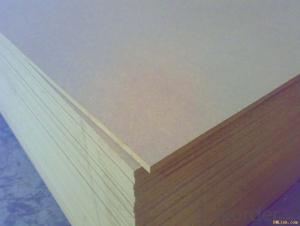When embarking on a construction or renovation project, one of the first decisions you’ll face is choosing the right material for the job. Two popular options that often come up are OSB (Oriented Strand Board) and Plywood. Both have their own set of advantages and disadvantages, and the choice between them can be a bit daunting. But fear not! I’m here to guide you through the process, making it as easy as pie. Let’s dive in and explore the ins and outs of OSB and Plywood, so you can make an informed decision that’s right for your project.
The Basics: What is OSB and Plywood?
Before we get into the nitty-gritty, let’s clarify what OSB and Plywood actually are. OSB is a type of engineered wood made from strands of wood that are arranged in specific orientations and then compressed with adhesive. It’s a relatively new material, first introduced in the 1960s, and has since become a popular choice for many applications. On the other hand, Plywood is a bit older, dating back to the early 1900s. It’s made from thin layers of wood veneer, known as plies, that are glued together with the grain of adjacent layers perpendicular to each other. This creates a strong and stable material that’s been a staple in the construction industry for decades.
Aesthetic Appeal: Which Looks Better?
When it comes to aesthetics, Plywood has a slight edge. The layers of veneer give it a smooth, consistent appearance that’s often more visually appealing than the rougher texture of OSB. However, the look of your material isn’t the only thing to consider. The way it’s finished can also have a big impact on the final appearance. For example, OSB can be sanded and painted, allowing for a more customized look. So, while Plywood may have the initial advantage, OSB isn’t far behind with a bit of elbow grease.
Durability: Which Lasts Longer?
Durability is a key factor in any construction project. In this regard, Plywood tends to come out on top. Its layered construction makes it more resistant to warping and shrinking, which can be a significant advantage in certain applications. However, OSB has its own strengths. It’s more resistant to impact and can handle heavy loads, making it a good choice for flooring and roof sheathing. So, while Plywood may be the more durable option overall, OSB has its own set of advantages that can make it a better fit for specific projects.
Cost: Which is More Budget-Friendly?
Let’s talk money. OSB is generally cheaper than Plywood, which can be a major factor in your decision-making process. If you’re working with a tight budget, OSB might be the way to go. However, it’s important to remember that the initial cost isn’t the only thing to consider. The cost of installation, maintenance, and potential repairs down the line should also be factored in. While OSB may be more budget-friendly upfront, Plywood’s longer lifespan and lower maintenance requirements can make it a more cost-effective choice in the long run.
Environmental Impact: Which is Greener?
In today’s environmentally conscious world, the environmental impact of the materials we use is more important than ever. Both OSB and Plywood are made from wood, a renewable resource, which is a plus. However, the manufacturing process for OSB uses more adhesives, which can be a concern for some. Plywood, on the other hand, uses less adhesive and is often made from a wider variety of wood species, making it a more sustainable option. So, if you’re looking to minimize your environmental footprint, Plywood might be the better choice.
Ease of Installation: Which is Easier to Work With?
When it comes to installation, OSB and Plywood have their own pros and cons. OSB is lighter and easier to handle, making it a good choice for DIY projects or situations where you’re working with limited manpower. However, Plywood’s smooth surface can make it easier to work with when it comes to cutting and finishing. It’s also less prone to splitting, which can be a major advantage when you’re working with precision tools. So, while OSB might be the easier option in terms of handling, Plywood has its own set of benefits when it comes to ease of installation.
Moisture Resistance: Which Holds Up Better in Wet Conditions?
Moisture resistance is an important consideration, especially for projects that will be exposed to the elements. Plywood is generally more moisture-resistant than OSB, thanks to its layered construction and the use of water-resistant adhesives. This makes it a better choice for outdoor projects or areas that are prone to dampness. However, there are moisture-resistant varieties of OSB available, so it’s not necessarily a deal-breaker if you’re set on using OSB. Just be sure to choose a product that’s specifically designed to withstand wet conditions.
Conclusion: Which Should You Choose?
So, there you have it. OSB and Plywood both have their own set of pros and cons, and the right choice for your project will depend on a variety of factors, including your budget, aesthetic preferences, durability requirements, environmental concerns, and the specific conditions of your project. By considering all of these factors, you can make an informed decision that will ensure your project is a success. Remember, there’s no one-size-fits-all answer, so take the time to weigh the options and choose the material that’s right for you. Happy building!

